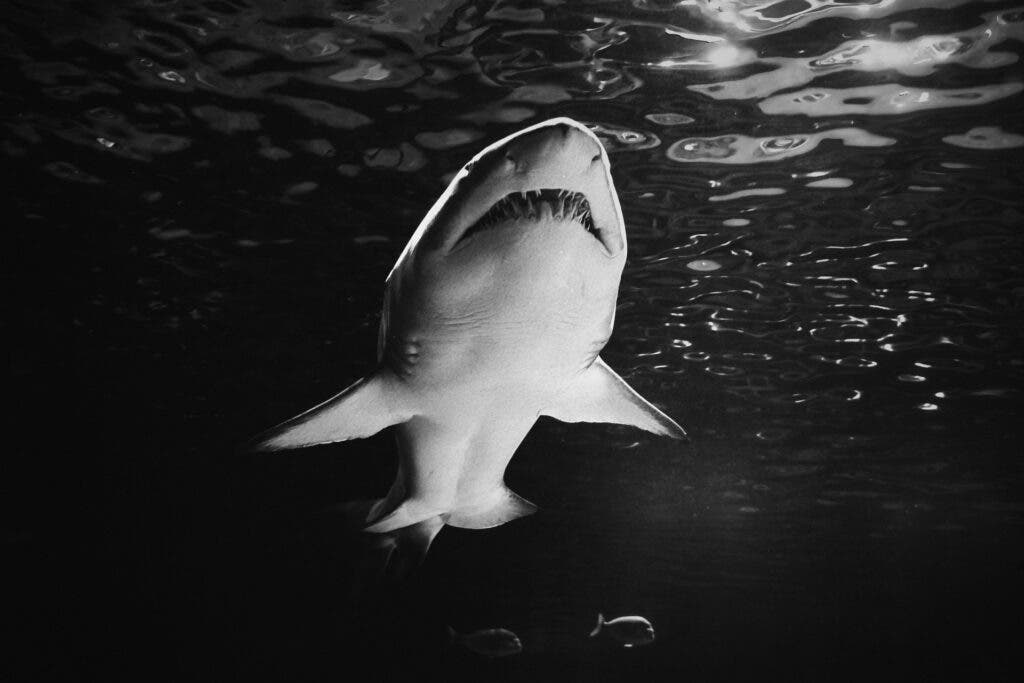A new study from Goethe University Frankfurt suggests that modern great white sharks may have contributed to the megalodon sharks’ extinction via dietary competition.

Also called the “megatooth” or the “big tooth sharks”, megalodons were one of the biggest fish that ever lived on the Earth. They used to consume 2,500 pounds of food on a daily basis and had an average body size thrice that of the largest current day great white shark. The strength of a megalodon was so formidable that one bite was powerful enough to crush any regular-sized car.
However, when it came to survival, looks like the relatively weaker and smaller great white shark beat the megalodon. A team of researchers analyzed the zinc content found in the enamel of the tooth of both great white and megalodon sharks. The analysis revealed several important details about the time when both the modern and extinct shark species co-existed.
Zinc isotopes explain the shark diet and trophic level interference
Since sharks don’t have bones, scientists across the globe routinely use teeth fossils to study extinct shark species. The same also applies in the case of megalodon sharks, which lived from around 23 million years ago to 3.6 million years ago.
A team of researchers at Goethe University developed a method to study the eating behavior and trophic levels of sharks using zinc isotopes. They compared the diets of 13 extinct shark species with 20 alive ones by analyzing the preserved zinc isotope values in their teeth.
Zinc is an environmental marker that signals where an animal is in a food web. While explaining their approach, the corresponding author of the study Jeremy McCormack from Goethe University in Frankfurt, Germany told ZME Science that zinc is incorporated into the enamel or enameloid of many animals (including sharks), and the ratio of heavier to lighter zinc isotopes is indicative of how high an animal is along the food chain — meaning “we can infer a relative trophic level by comparing the zinc isotope ratios in the enameloid of different animals or individuals.”
When researchers analyzed the zinc isotope values for the great white shark and Otodus megalodon (both species co-existed in the Pliocene era), they found that the values overlapped. These findings further suggested that both the shark species co-existed and competed for the same kinds of prey during the early Pliocene period (2.58 to 5.33 million years ago). They occupied the same role in the food chain, which means they competed with each other.
“Our research suggests that megalodon and great white sharks fed on the same trophic levels when co-occurring. There was likely at least some overlap in prey species between megalodon and great white sharks,” said Dr. McCormack.
The researchers claim that this is the first zinc isotope study on non-mammalian vertebrates and more such research involving zinc isotopes could reveal significant information about the eating habits and evolutionary characteristics of extinct marine species. Dr. McCormack and his colleagues now aim to better understand how zinc isotope ratios change in different body tissues relative to the diet.
The study is published in the journal Nature Communications.









